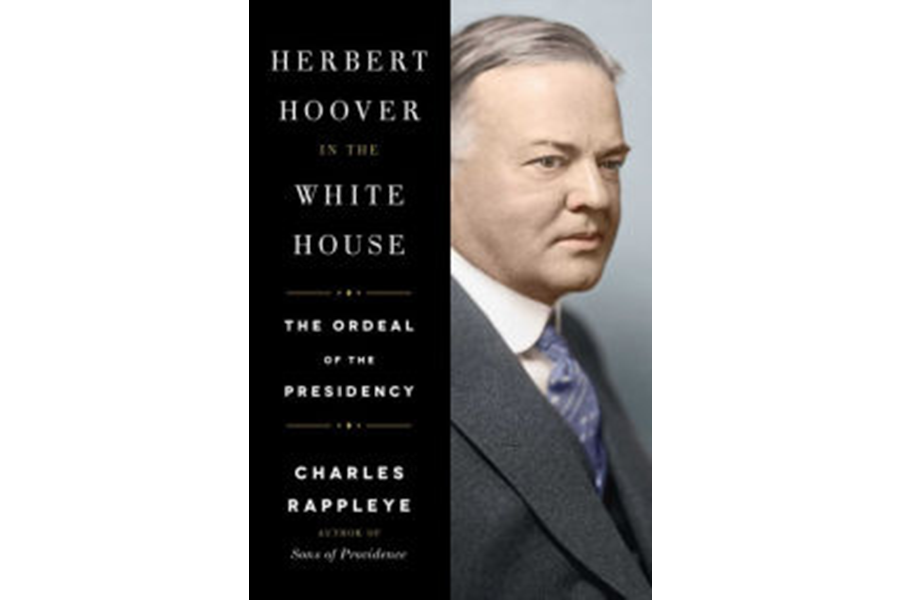'Herbert Hoover in the White House' offers a more fully dimensional portrait
Loading...
History hasn't been kind to Herbert Hoover. The 31st president of the United States had only been in office a few months in 1929 when the Great Depression struck, and although he took some hesitant and fumbling steps to counter it or at least prevent it from worsening, he was inevitably blamed for it by the rank and file millions of Americans who suddenly found themselves standing in breadlines. And Hoover himself certainly made things no better when he made morose and petulant remarks like, “Well, it could be worse.” The kindest standard characterizations of the man paint the picture of an unimaginative plodder hopelessly out of his depth on the national or international stage.
Charles Rappleye's new book Herbert Hoover in the White House: The Ordeal of the Presidency aims to correct that impression, to flesh out the standard picture of Hoover by using a greater array of primary sources – newspaper accounts, government documents, private diaries – than any previous account.
In this he largely succeeds. His book seldom rises to the sheer readability of Richard Norton Smith's Hoover biography "An Uncommon Man," but what his narrative loses to Smith's salty panache it more than recovers with a greater gravitas and psychological insight than any biography of a US president to appear so far this year.
Rappleye dispenses with the basics of Hoover's early life fairly quickly: born in Iowa, raised Quaker, trained as an engineer, elevated to great wealth as a mining financier, made head of the US Food Administration under President Woodrow Wilson and Secretary of Commerce under President Warren Harding. Although disliked or distrusted by many leading Republicans in the 1920s (including their standard-bearer, President Calvin Coolidge), Hoover was their candidate in the 1928 presidential election and won it handily, running mainly on promises of greater economic prosperity. As journalist Anne O'Hare McCormick wrote: “The whole country was a vast, expectant gallery, its eyes focused on Washington.… We had summoned a great engineer to solve our problems for us; now we sat back comfortably and confidently to watch the problems being solved.”
Taking Hoover's surprising victory as his starting point, Rappleye writes, “[His] conquest of a hostile Republican Party, and the resounding victory he registered in the presidential election, is one of the more remarkable stories in the annals of American politics.” Hoover ran as a largely self-financing “outsider” to an electoral process dominated by party machines, and although he had no elective experience of any kind, he swept into office on a wave of low-information populism. Rappleye worked on his biography for many years – the research evident in these pages is impressive – but random timing is clearly also on his side, as the 2016 Republican Party prepares to nominate another business-world “outsider” with no experience at the work of governing.
The results in Hoover's case were nothing short of disastrous. Although he “made prosperity his core message,” he was caught completely off guard when the Stock Market Crash of October, 1929 widened into a Great Depression that paralyzed trade, sparked a wave of bank closures, and put millions of people out of work and often out on the street. Rappleye's detailed and gripping account of the ordeal is the superb narrative highlight of his book.
However thrilling it makes the central failure of Hoover's administration, the book can't exonerate him from it, and Rappleye deserves credit for not trying too hard to do that. His Hoover may not be the “clay-footed conservative” of the textbook accounts, “who preached the old dogmas of laissez-faire while the false idols of capital came crashing down; handmaiden to the elite, scourge of the huddled masses," but there's a fatal ease in how quickly such characterizations come to mind. And again, the biographer is scarcely helped by his subject, who “treated his inner life as a sanctuary and a secret, a forbidden zone that he protected so fiercely that he appeared to fear even his own inquiries.” It's tough to write a compelling biography of a life that went unexamined by the person actually living it.
This Hoover, like all the others encountered by previous biographers, is “surly, easily frustrated, and sometimes vindictive” while in office, a man who “regarded his enemies and often his friends with suspicion.” That Rappleye is able to dig deeper and elicit as much sympathy as he does for Hoover – a man who was, after all, personally responsible for an enormous amount of charitable hunger relief in the course of his life, at a time when many of his fellow financiers couldn't be bothered – is a testament to the winning power of Herbert Hoover in the White House. Hoover's been treated harshly but fairly by most biographers as a failure of a president at precisely the time when a success was most needed. Rappleye doesn't contest this verdict, but his criticisms are tempered with some perhaps long-overdue sympathy.






